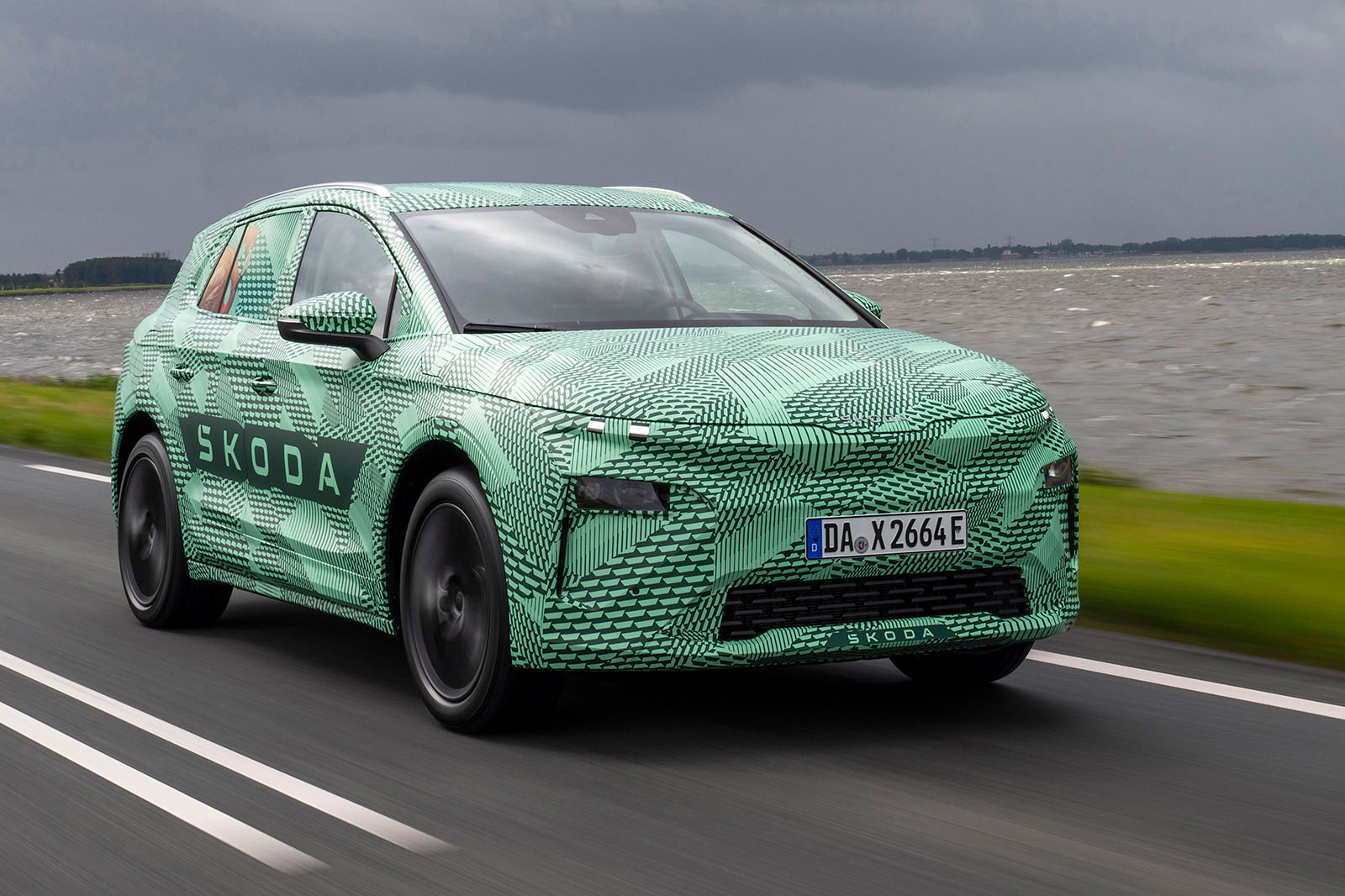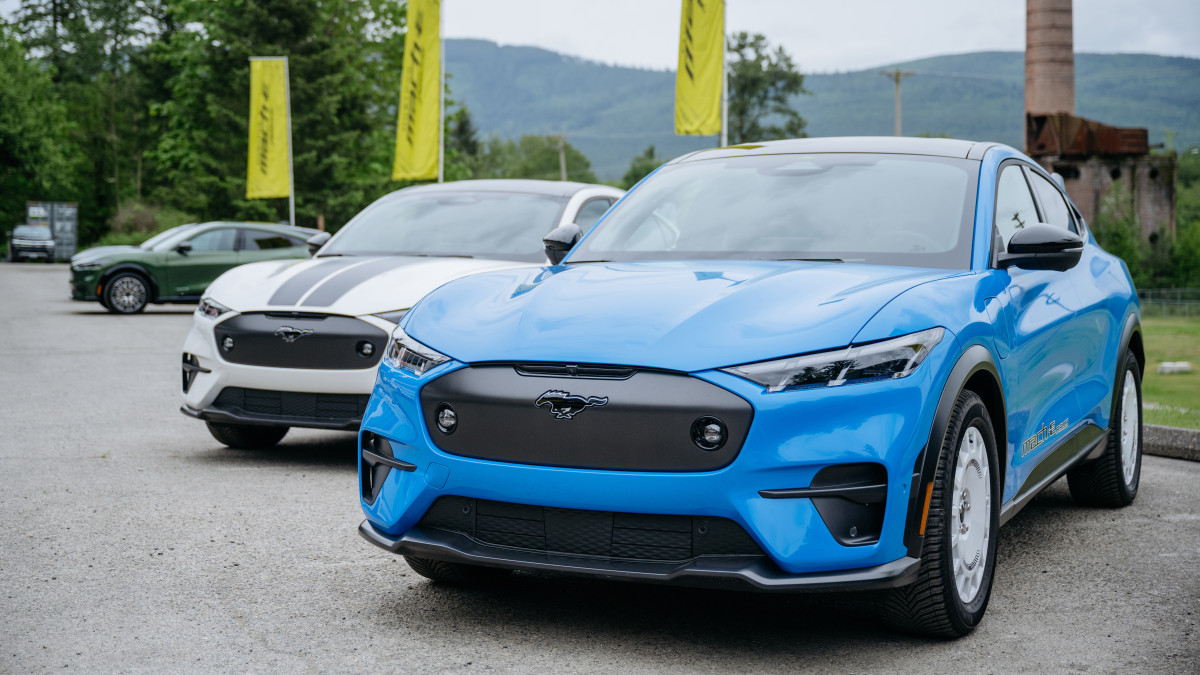
In fact, it’s about the same size as the Ford Explorer. It sits on the same MEB platform too. Overall, it’s about 160mm shorter than the Skoda Enyaq. The reduction comes from reduced overhangs, because the Elroq’s wheelbase is very similar to its bigger sibling’s.
The design, however, is not. It’s a new, overarching theme that Skoda’s calling ‘Modern Solid’. Not that we’ve seen it in all its glory yet: the test cars were full-camo pre-production models. Still, having scrutinised them up close and listened to the designer describing the details, here’s what we’ve gleaned.
The nose features what Skoda’s calling its Tech-Deck Face. This signifies an all-LED, split-light design, with the upper daytime-running lights part of a light bar that runs the car’s width. The lower headlights flank a gloss-black panel (instead of an open grille) housing sensors for the safety assistance systems. Skoda says those systems have been refined, by the way.
Aero plays a big part, naturally. The clamshell bonnet, with ‘Skoda’ spelled out across its leading edge in place of a badge, is heavily sculpted. It leads to a raked-back windscreen that flows into an almost Evoque-like sloping roof, finished off with a spoiler. Particular attention was paid to closing the gap between the tyres (wheel sizes range from 19in to 21in) and the bodywork, which, Skoda says, is key to the Elroq parting the air neatly enough to achieve a Cd of 0.26.
The entry-level version is the 50 (model names indicate battery sizes). It has 168bhp and is likely to come in at £35,000. Next is the 60 with 201bhp, but we drove the 85. That has 281bhp and, like the others, is rear-wheel drive. There’s also a twin-motor four-wheel-drive version with 295bhp called the 85x.
Skoda says both 85 models can do 348 miles on a charge, then charge at up to 175kW. It’s not confirmed, but the 50 should do about 230 miles, the 60 around 250 miles, and both charge at about 130kW. Taking the varying battery capacities into account, all Elroqs will boost from 10% to 80% in around 25 minutes. To achieve that, there’s battery pre-conditoning. It’s activated either manually or automatically if there’s a charge stop on the navigation route.






